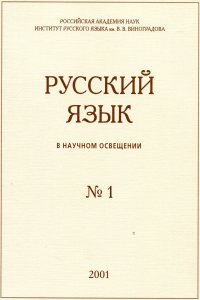Conditional conjunctions in the original Old Russian texts of different genres
Abstract:
The article analyses the use of conditional conjunctions in various original Old Russian works. The study shows that the texts of the 12th–14th centuries demonstrate an uneven state of the language system when it comes to choosing a conditional conjunction.
The following Old Russian conjunctions are used in a conditional meaning: aže, ali, ače, aci, daže, dače, jeli, ili, ože, oli, oče, paky (li), se li – as well as Church Slavonic ašče, ježe and iže. The peculiarity of the situation is that, unlike the Church Slavonic language, the Old Russian language does not have its own specific conditional conjunction. All frequently used conjunctions that convey the meaning of ‘if’ are multifunctional.
In Old Russian texts, three conjunctions are most common in the conditional function: Church Slavonic ašče and Old Russian aže and ože, presented in different ratios in different texts, depending on their genre. In hagiographic, homiletic, and canonical works, only ašče is allowed. The same is observed in the gnomic writings of Daniil the Immured and ancient Russian pilgrimages. In other original (not translated) works, aže and ože are used, and aže is perceived as a word of high style, perhaps because it resembles ašče. The dividing line in the use of Old Russian conjunctions runs not only between
genres, but also between texts of different styles. So, aže is found in all high style teachings, and ože only in the Teaching of John-Elijah. In high slyle chronicles, the main conditional conjunctions are, in decreasing order, ašče, ože, aže, in less bookish chronicles – ože, aže, ašče. In rather low style genres, we practically do not find the conjunction ašče, and the ratio between ože and aže depends on the time when the text was created: ože leads in early works, aže is more common beginning from the 14th century. Other conditional conjunctions are much less common, are not represented in all the texts, and have a certain specifics of usage. For example, conjunctions with the particle li, tend to indicate an alternative condition, which comes from the original adversative semantics of li. The Church Slavonic conjunction ježe may have been perceived as a variant of the Old Russian ože, more appropriate for more formal genres.


